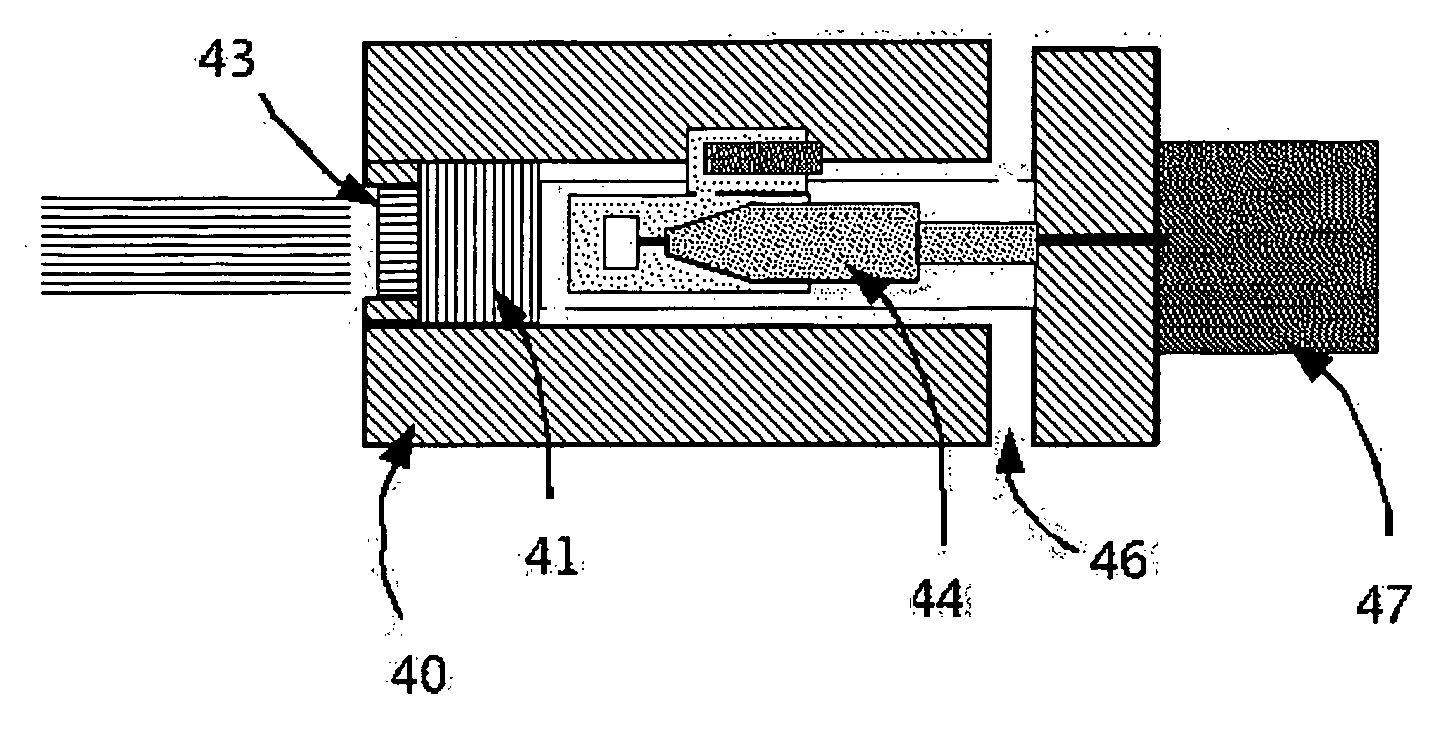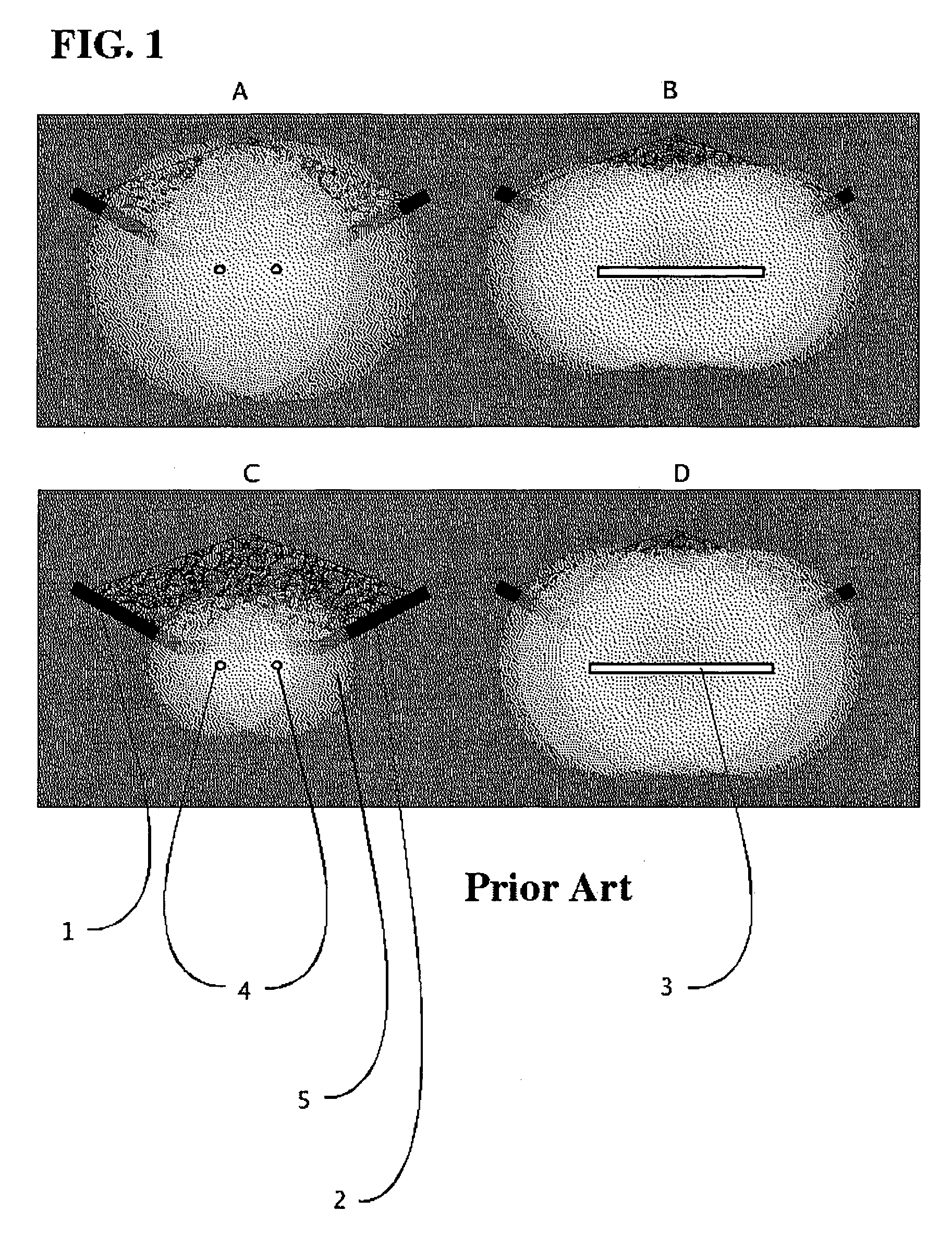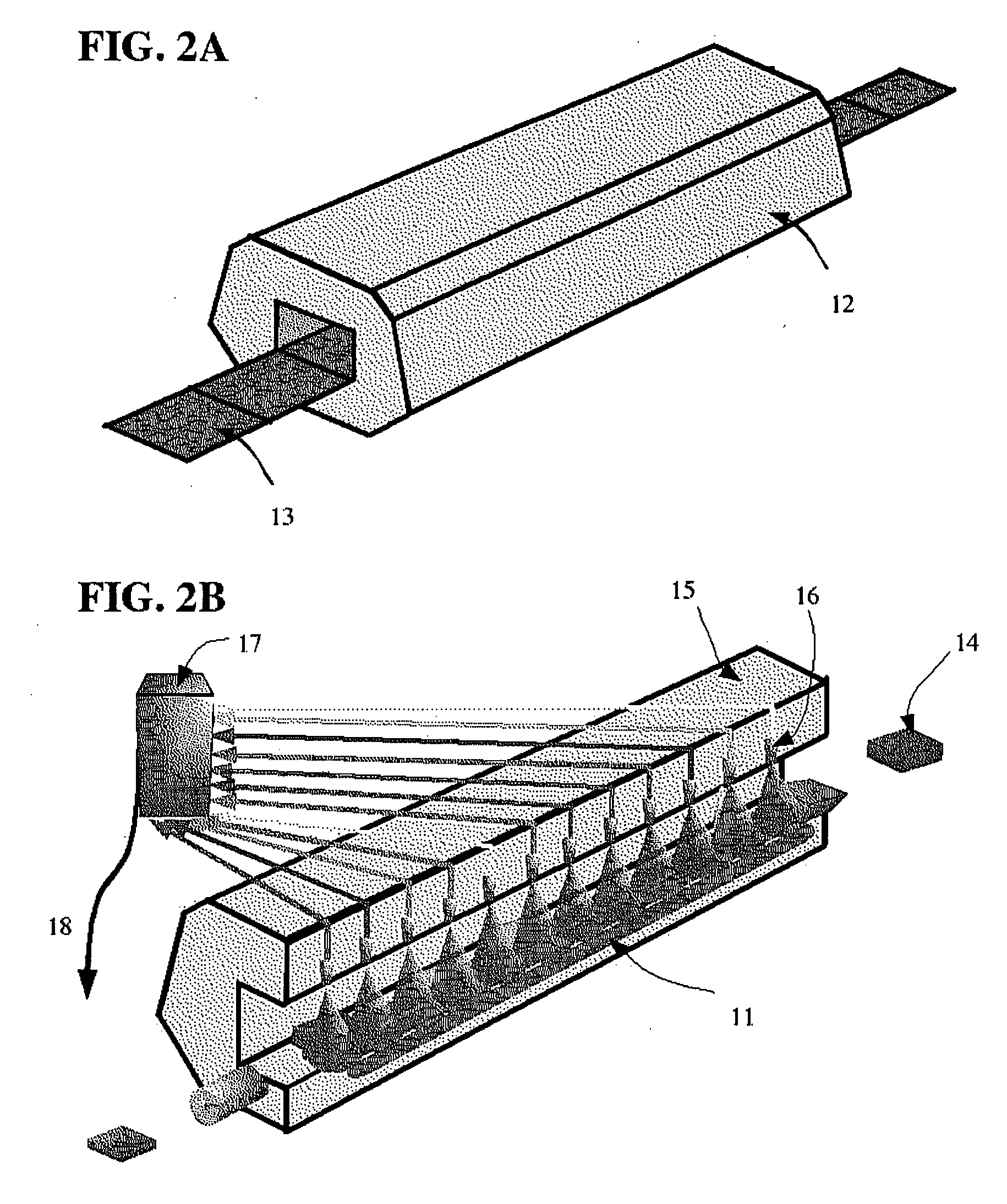Process for Neutron Interrogation of Objects in Relative Motion or of Large Extent
a technology of object relative motion and neutron radiation, applied in the direction of neutron radiation measurement, engine lubrication, liquid/fluent solid measurement, etc., can solve the problems of reduced operational life between servicing sessions, reduced analysis and reduction to practice, and reduced use efficiency, etc., to achieve easy removal of extraneous noise effects, minimize cross-sectional blockage, and high speed
- Summary
- Abstract
- Description
- Claims
- Application Information
AI Technical Summary
Benefits of technology
Problems solved by technology
Method used
Image
Examples
Embodiment Construction
[0089] The present invention makes use of the length characteristic or more generally the three dimensional topology of neutron generators which are able to provide this feature to teach utilization in example embodiments which have not been disclosed in prior art. The applicable neutron generators have a non-point-like zone of neutron emission. With point-like neutrons sources such as radionuclides or the well known neutron generators that have been available prior to 2003 emission field characteristics similar to line sources have been achieved by the use of multiple point sources as shown in FIG. 1A where a conveyor belt 1 or similar mechanism carrying bulk material 2 is irradiated at a defined location by a flux of neutrons for an elemental analysis technique. The requirement for a line source has been implicit since the introduction by manufacturers of online mineral analysis systems with an array of point sources. The utilization of such a line source 3 is illustrated in FIG. ...
PUM
| Property | Measurement | Unit |
|---|---|---|
| diameter | aaaaa | aaaaa |
| length | aaaaa | aaaaa |
| length | aaaaa | aaaaa |
Abstract
Description
Claims
Application Information
 Login to View More
Login to View More - R&D
- Intellectual Property
- Life Sciences
- Materials
- Tech Scout
- Unparalleled Data Quality
- Higher Quality Content
- 60% Fewer Hallucinations
Browse by: Latest US Patents, China's latest patents, Technical Efficacy Thesaurus, Application Domain, Technology Topic, Popular Technical Reports.
© 2025 PatSnap. All rights reserved.Legal|Privacy policy|Modern Slavery Act Transparency Statement|Sitemap|About US| Contact US: help@patsnap.com



